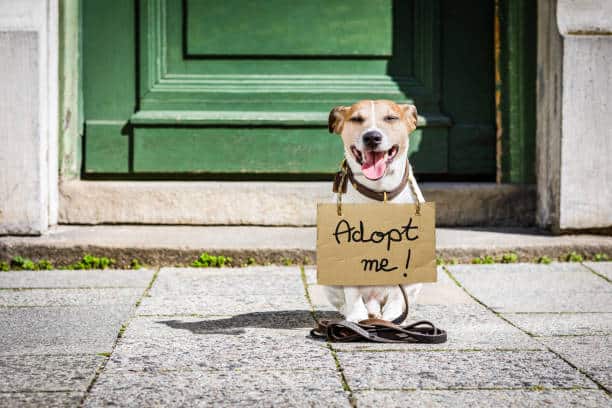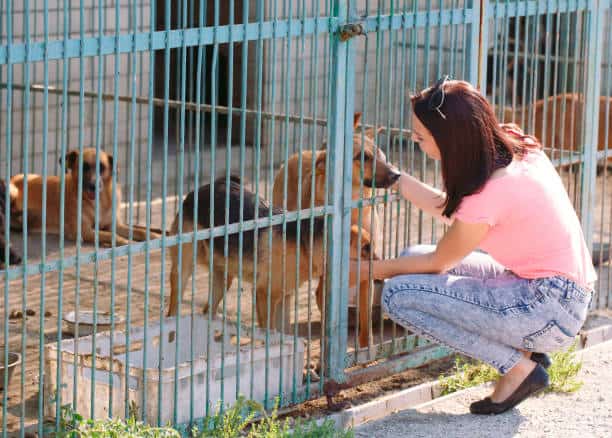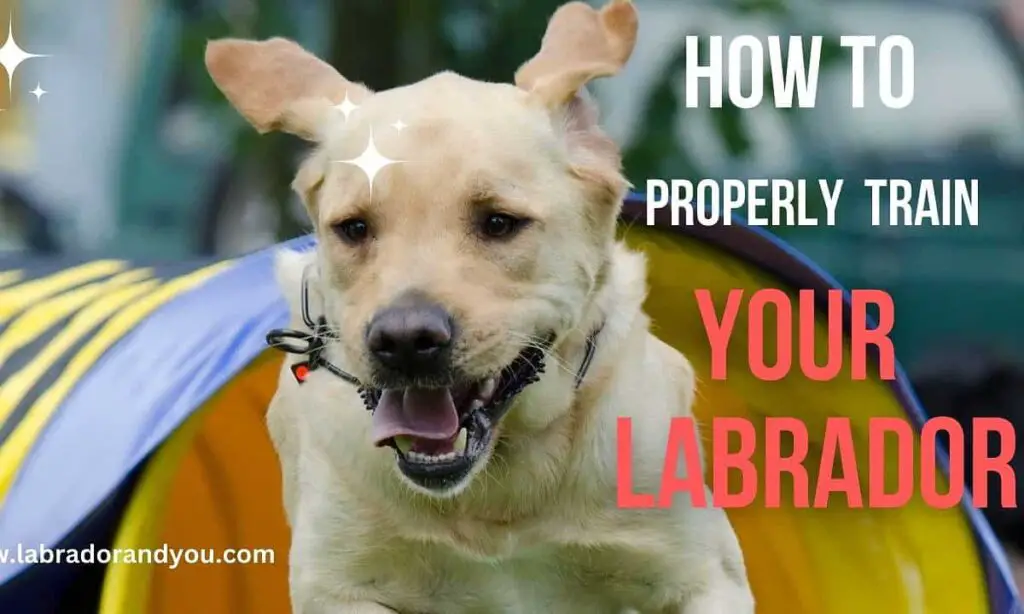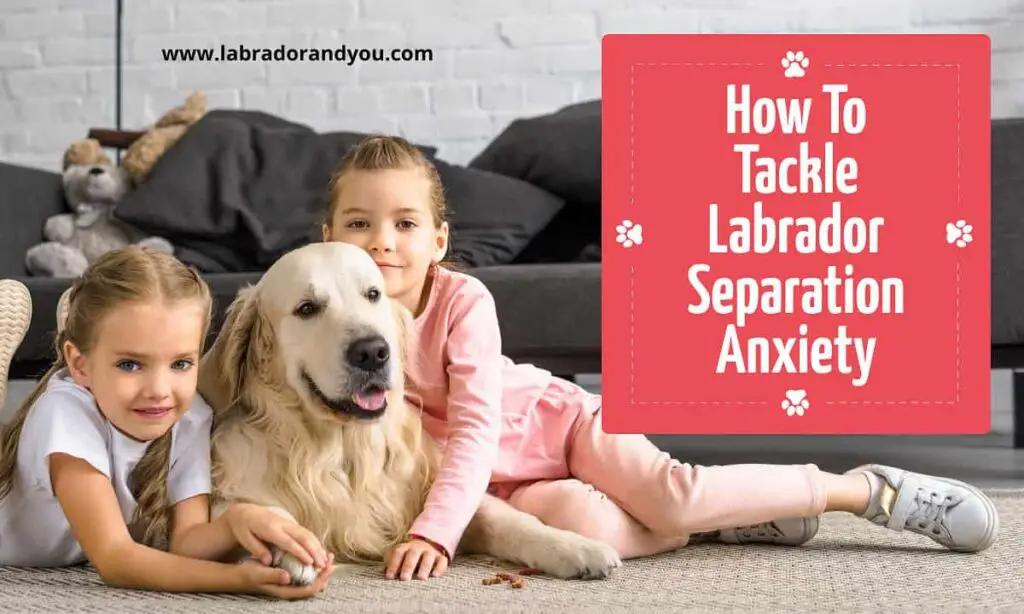When adopting a dog, be wary of shelters or rescues that do not ask questions about your home environment, lifestyle, and ability to care for a pet. Avoid adopting dogs with unknown histories or severe behavior issues unless you have experience and are prepared to provide training. So what are the red flags when adopting a dog?
Ensure a vet has examined the dog and is up to date on shots. Adopting impulsively without being ready for the commitment can risk the dog’s wellbeing. Carefully consider if it’s a good match.

Why Do Adoptions Fail?
Adoption failures are real. Many adopted dogs end up back in shelters or rescues. This turns out to be around 10% of all adoptions. There are many reasons for this sad result.
Often, people think they’re ready for a pet but aren’t fully aware of the work it takes. Caring for a dog requires time, care, and money. If these things lack, the adoption is likely to fail.
Some new owners find out too late that their dog has health issues or severe behavioral problems. These issues could lead to an adoption failure as well.
Families may also return dogs after seeing they don’t fit with their lifestyle or other pets in the house. It’s hard when hopes run high at first but then fall flat because the match wasn’t right from the start.
7 Warning Signs When Adopting A Dog
In the process of adopting a dog, be alert to warning signs like misleading behavior descriptions in advertisements and missing details. Dig deeper if you notice aggression, fearfulness, or unusual behaviors like lethargy and excessive barking.
Constant hiding or heavy breathing could indicate distress while an overly energetic and friendly pup might have underlying behavioral issues.
Carefully worded behavior statements in ads
Ads for dogs can have words that are not true. These words might hide or make light of a dog’s bad actions. For example, an ad may say a dog is “playful” when it is really too strong and rough.
You need to watch for words in ads that do not say the whole truth about a dog’s actions. If you see such words, ask more questions to learn the true facts about the dog’s behavior.
Missing information
A dog without full records is a red flag. You need all the details about the pup’s past. It helps to know things like when their shots were given, and if they’ve been sick before. Not having this info means you may have surprises down the line.
Be cautious of shelters that don’t give clear answers or share full information about a dog’s history. They might hold back facts on purpose. This could mean hard times for you and your new pet later on.
Aggressive or fearful behavior
Dogs show signs when they feel scared or mad. This is a red flag to look out for when picking a dog to adopt. Growling and barking non-stop are not good signs. These behaviors might mean the dog has problems.
Some dogs act this way if they have been hurt or left alone too much in the past. A healthy, happy dog does not act like this all the time. It’s important to pick a dog that feels calm and safe most of the time.
Lethargy or excessive barking
Pay close attention to a dog’s energy levels. If the dog constantly seems tired, this could be a sign of lethargy. It might mean that there are health problems. On the other hand, if a dog barks too much, it is an important warning signal.
Excessive barking can show that it has behavioral issues. Both these signs need careful thought before adopting a dog.
Hiding or heavy breathing
Dogs may try to hide when they are scared. This is one sign of fear or anxiety. Another sign can be heavy breathing. A dog’s breath might speed up if it feels nervous or uneasy. If a dog hides or breathes fast, these could be signs that the dog is not at ease.
It’s good for dogs to feel safe and calm in their home with you. But sometimes, dogs come from tough pasts and they need time to rest and learn trust again. You have to think about this if you want a new pet dog.
Also, check with an expert like a vet if the heavy breathing lasts for too long or seems odd.
Too energetic and friendly
Adopting a dog that seems too energetic or friendly may initially seem good. But you need to watch out. These dogs can have hidden problems. Some act hyper as they are anxious or nervous.
Others could be restless because they feel sick. Pay close attention to their actions before you choose them. This can help stop sad surprises later on!
Most Important Factors for a Successful Dog Adoption
Identifying a dog’s behavioral issues, investing in training, setting realistic expectations and fostering an active bond are key success factors in dog adoption. Don’t forget to check out the full post for a detailed understanding of these aspects.
Identifying behavioral issues
Seeing behavior problems in a new pet can be hard. Dogs may act out when they are scared or not used to their new home. Some dogs bark too much or show they are upset by hiding or being very still.
Other dogs might be too full of pep and want to play all the time. This can wear you out fast! Sometimes, dogs can also get mad at people or other pets for no clear reason. Knowing how to spot these issues is very important.
It helps you ensure your new pet fits well in your home.
Investing in professional training
Getting your dog into training is key to a happy pet life. A pro trainer can help with any bad habits. They can also teach dogs new things. This all helps for smooth living with the new pet.
It’s good to get this training before taking a dog home. If you do, you will be more ready to handle any issues when they pop up at home. It’s an important step for success in adopting a dog!
Knowing what to expect
Getting a new dog is an exciting time. But, you need to know what to expect. Dogs may act in different ways at home than they do in the shelter or rescue group. They might bark too much or show signs of fear or anger.
It’s important to ask about the dog’s past and watch out for any odd behavior. If anything seems off, be sure to bring it up right away! Going forward with open eyes can make your pet’s shift into their new home smoother for both of you.
Building an active bond
You and your new dog need to form a strong bond. This means spending lots of time together. Play fetch, walk in the park, or just relax at home. You will learn about each other and start building trust.
Bonding helps with training as well. A safe and loved dog is likelier to listen and follow commands.

Red Flags to Watch Out For When Adopting a Dog
Discover essential red flags to consider when adopting a dog, such as a hasty adoption process or visible health issues. Stay alert to ensure your new family member is healthy and the right fit for you. Read on to learn more about these warning signs and how to navigate them smartly during the adoption process.
Shady shelter or rescue
Keep away from a suspicious animal shelter or rescue. A key warning sign of a shady shelter is rushing you to take a dog home. They may avoid giving full details about the dog’s past and health status.
Check if they have clear records of their dogs’ medical care. If not, it could be one of the concerning practices at a shelter or rescue. Also, watch out for places with many puppies but no older dogs.
It can point to them being part of puppy mills, which are bad news! So, it matters where you adopt your dog from.
Being pressured into a quick decision
Fast choices are not the best in dog adoption. Shelters might push you to choose the spot. This is a clear red flag! A good shelter lets you take your time. They want to ensure it’s a great match for both sides. Don’t let anyone rush you into this big decision!
Free or low-cost dogs
Free or low-cost dogs might seem like a good deal. But, this can be risky. Sometimes, these dogs get little vet care. This is bad as the dog could be sick and you won’t know about it.
Some shelters that offer cheap dogs don’t have a good online presence or get bad reviews from people who have used them before. They may not share all the information about a dog’s past either.
These are things to look out for when adopting a cut-rate pet.
Dogs offered at no cost may act scared or mad more often too. This might mean they had rough times before coming to you and now they are dealing with those feelings still inside of them.
If your new free pooch barks too much or seems upset most of the time, it could be because they aren’t used to being around people yet.
Another sign that something isn’t right is if the dog doesn’t look healthy or shows signs of being mistreated in any way shape or form; such findings should put you on high alert over taking home any free dog.
No chance to meet the dog beforehand
One sign to watch out for when adopting a dog is having no chance to meet the dog first. Meeting the dog helps you learn its behavior before making it part of your family. Not being able to spend time with the dog could mean that there are things about its attitude or health that are being hidden.
It’s vital for shelters and rescues to let potential adopters interact with dogs. This lets you see if you’re a good match with the pet. If they don’t allow this, consider going elsewhere for adoption.
Visible injuries or illnesses
You should be careful when you see a dog with cuts or hurts. These can show that the dog is sick or hurt. Also, watch out for dogs who cough or sneeze a lot. This may mean that the dog was not cared for well or had bad things happen to them in the past.
Getting help from a vet can fix these problems but it will cost money and take time. Taking care of a hurt or sick dog will need more than just love, it takes work too!
Red Flags in a Dog’s Health
Adopting a dog with health issues can lead to heartbreak and extra expenses, so it’s crucial to recognize signs such as lethargy, excessive coughing or unaccounted medical records that might indicate poor health.
Stay tuned for more on identifying these red flags.
Lethargy
Lethargy is a health sign you must look out for in dogs. It means the dog often feels tired and has little energy. Dogs with this issue might act slow or show little interest in playing.
This is not usual for dogs and can point to serious health problems like heart issues or breathing trouble. Meeting a vet is important if you find your dog acting this way. Your dog’s life could be at risk if it shows sudden lethargy, so take quick action.
Excessive coughing
A dog that coughs too much might be sick. This can mean he has a heart issue or a problem with his lungs. Coughing also comes from colds, allergies, and chest problems. Dogs do not usually cough like humans do.
So, if your new friend is always coughing, it’s time to talk to a vet.
Your dog may make different noises when he coughs. He might wheeze, gag or sneeze often. These are signs that something is wrong and needs attention right away. Do not wait to get help for your pet if you see these red flags.
Poor nutrition or lack of medical records
Poor care can harm a dog’s health. Bad food may lead to bad breath, body smell, dull fur or much hair loss. Bad food can also make dogs sick with conditions like diabetes. It is vital to ask for health records during the adoption process.
This shows if the dog got good care. No medical history might mean the dog had poor care before. If someone will not share these records, it could be a warning sign of past neglect.
Red Flags in a Dog’s Behavior
Look out for signs of aggression, fearfulness, or separation anxiety in the dog’s behavior as these could indicate deeper-rooted issues.
Aggression
Aggression is a scary sign in a dog. This fierce demeanour can show as anger, threats, or attacks on people or other pets. A violent dog can act out due to medical issues or unknown past troubles.
Note how the dog deals with provocation and if it tries to prove its dominance too often. Don’t ignore this big red flag when adopting a new pet.
Fearfulness
A dog can show fear in many ways. This includes hiding, shaking, or trying to run away. Fear can mean the dog finds it hard to cope with new people or places. It is a red flag when a dog acts this way.
The dog might have been poorly socialized before.
Every loud noise or sudden move may scare them. This is known as a startle response. They may also be shy around other dogs and people. If they are too scared, they might not eat or play well.
So, noticing these signs of fearfulness early is key when adopting a dog.
Separation Anxiety
Dogs can feel stress when they are alone. This is called separation anxiety. They may show signs of fear or act out in strange ways. They might bark a lot, chew on things, or dig in the yard.
These are all signs your dog is not happy when you’re gone. It’s important to watch for these signals so you can help them feel better.

Compatibility Red Flags
In this section, we’ll explore compatibility issues that could serve as red flags when adopting a dog, such as inadequate living space for the breed or size of the dog, and not considering your working hours against the attention needs of your new pet.
Inadequate living space
Inadequate living space is a big red flag when thinking of adopting a dog. Not having enough room can cause issues for your new pet. It’s important to spot this problem early on. This signal shows you may not be ready to have a dog yet.
Before getting a dog, check how much space you have at home. Make sure it will fit the needs of your future pet friend. A good living area helps keep dogs happy and healthy!
Not considering working hours
Dogs need your time and care. If you work a lot, it can be hard for the dog. They may not get enough exercise or play time. This can make them sad or cause bad behavior.
You must also set up a routine for your dog. Dogs like rules and schedules. It helps them feel safe and happy. If you do not have a set schedule because of work, it can confuse the dog and stress them out.
Conclusion
In the end, adopt a dog is a big task. Keep your eyes open and heart ready. Be wise about red flags when you look for a dog to take home. Making careful choices can keep troubles away when getting a new pet.

FAQs
1. What Red Flags Should I Watch Out For When Adopting A Dog?
Red flags include shelters/rescues that don’t ask questions about your home and lifestyle, dogs with unknown histories or severe behavior issues if you lack experience and lack of vet care/vaccinations. Also impulse adopting without preparation and inability to provide proper care and commitment.
2. Why Is It Concerning If A Shelter Doesn’t Ask Me Questions Before Adopting?
Responsible shelters want to ensure a dog is going to a home that fits their needs. No questions could signal they are more concerned with high adoption rates than good matches.
3. What’s Wrong With Adopting Dogs With Unknown Histories?
You likely don’t know important details like past trauma or medical needs. This makes training and care difficult if issues arise that you’re unprepared for.
4. When Might Taking On A Dog With Behavior Issues Be Ok?
If you have substantial experience rehabilitating dog behavior problems and are ready to commit time/resources to training, a dog with issues may be manageable. But inexperienced owners are likely to become overwhelmed.
5. Why Do I Need To Confirm The Dog’s Medical Records?
You want to ensure the dog is healthy and has received appropriate vaccinations/preventative care. Undiagnosed conditions or lack of shots can result in expensive vet bills down the road.
6. What If A Dog Hasn’t Been Spayed/Neutered Yet, Is That An Issue?
Ideally the dog should be fixed prior to adoption to avoid accidental litters. At minimum, the shelter should require you get it done and help arrange low-cost vet care.
7. Is It Ok To Just Pick A Dog I Bond With At First Sight?
While chemistry is great, impulse picking a dog based on looks or pity can backfire if your lifestyles and needs aren’t fully compatible in the long-term. Take your time.
8. What Problems Result From Adopting On Impulse Without Preparation?
You may not be ready for costs/responsibilities of ownership if you don’t research needs. Lack of preparation often leads to rehoming, which further traumatizes dogs.
9. What Supplies/Changes Should I Have Ready Before Adopting?
Have food bowls, collar/leash, bed, toys, starter food supply, vet saved in contacts, dog-proofed home, and schedule changes ready so the dog can easily transition.
10. How Can I Find A Reputable Rescue Or Shelter To Work With?
Look for nonprofits active in networks like Petfinder. Read reviews, meet available dogs many times pre-adoption, and get references from prior adopters.
Author Profile

- Lifetime dog Enthusiast
- Shradha is a seasoned writer at Labradorandyou.com, an authoritative resource for all things Labrador Retriever. Her experience as a pet owner and dog enthusiast drives her to create meticulously researched and fact-checked content, offering valuable insights on Labrador training, grooming, and health. Each article reflects Shradha's passion and dedication, enriched by personal experiences with her beloved Labradors, Tom, and Kurt. Whether exploring breed-specific training techniques or providing product reviews, Shradha ensures Labrador owners receive the most accurate, up-to-date, and trustworthy information, aimed at enhancing their companions' health and happiness
Also by the author
-
 Lab-TypesJune 30, 2025Мостбет Букмекер: Официальный Сайт Игровых Автоматов Mostbet Bookmaker
Lab-TypesJune 30, 2025Мостбет Букмекер: Официальный Сайт Игровых Автоматов Mostbet Bookmaker
-
 MonobrandJune 30, 2025Fontan Casino ️ One Hundred Pln Darmowy Zakład Bez Depozytu
MonobrandJune 30, 2025Fontan Casino ️ One Hundred Pln Darmowy Zakład Bez Depozytu
-
 Lab-TypesJune 30, 20251xbet Зеркало рабочее На Сегодня прохода На Сайт 1хбет Обновлено!
Lab-TypesJune 30, 20251xbet Зеркало рабочее На Сегодня прохода На Сайт 1хбет Обновлено!
-
 Lab-TypesJune 30, 2025Мостбет Mostbet Букмекерская Контора: Зеркало, Официальный Сайт, Бонус При Регистрации
Lab-TypesJune 30, 2025Мостбет Mostbet Букмекерская Контора: Зеркало, Официальный Сайт, Бонус При Регистрации





